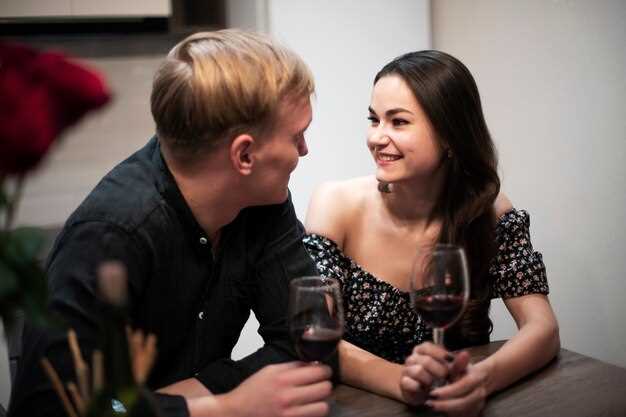Make eye contact and deliver one true compliment within the first moment of meeting someone. Your mindset shapes how you come across, and a genuine expression signals that you are engaged with the person, not simply delivering lines. People remember the content of the moment, and what you say matters. If you were told that small gestures don’t matter, prove them wrong with a calm, confident smile and a natural tone.
Beyond the eyes, let the conversation flow. A single compliment rooted in observation makes the other person feel seen rather than evaluated. When you listen, your body language says more than words: relaxed shoulders, open palms, and a steady tempo show you are engaged. If you’re unsure what to say, think about something you appreciated in them and mention it succinctly in your message.
Self-reflection after a chat boosts your future odds. Note what worked in the last few months: mindset shifts, what made the other person smile, and what caused anxiety to rise. Keep a simple entry on your phone with one sentence about what felt authentic, what felt forced, and what you would do differently. This practice helps you fine-tune matches and stay present during conversations.
Planning the first date with clarity yields better results. For a date, choose a setting that supports conversation, with options in case the vibe shifts. Aim for 60–90 minutes, avoid back-to-back commitments, and offer a flexible time window via the phone so your date feels respected. Share three concrete options in your message rather than a vague suggestion, and let them pick the option that fits best.
When you sense a good connection, keep momentum by sending a short, specific plan within a few days. Reference something they said to show you listened. If you coach clients or guide friends, you know people respond best to authenticity, not a rehearsed script. A content approach, plus a calm breath before you answer, demonstrates that you think before you act and that you care about the other person’s comfort. That tiny moment can set an awesome tone for the evening and pave the way for a lasting connection.
16 Dating Tips for Long-Term Compatibility: From Eye Contact to the Perfect First Date
Tip 1: Express genuine interest from the first moment: steady eye contact, a relaxed smile, and a light physical openness signal warmth that invites conversation.
Tip 2: Prepare open-ended questions that reveal values and long-term aims. If you asked what matters most to them, you’ll gauge alignment and what could work going forward.
Tip 3: Read nonverbal cues; if they look uncomfortable, slow the pace, give space, and avoid forcing topics.
Tip 4: Practice active listening: reflect back, paraphrase, and show you understand them without interrupting.
Tip 5: Align on core values early: discuss family, work, and daily routines to see if your paths could converge with absolute alignment.
Tip 6: When fitness and wellness come up, share your routine with clarity and listen to theirs; these details reveal daily exercise and discipline.
Tip 7: Design the first date as a short, comfortable course with options: a walk, a cafe, or a quick activity to test compatibility.
Tip 8: Keep conversations social and light at first; try a simple dating strategy to test compatibility. If you are interested, look for signals that they want to continue going.
Tip 9: Be clear about your status: if you are single and seeking a meaningful connection, state it with calm confidence, avoiding less pressure and confusion.
Tip 10: Set boundaries early: say what you cant do and what you are not ready to discuss, and respect theirs in return.
Tip 11: Observe how they treat staff and other people; warmth toward each person signals character and practical empathy.
Tip 12: Use images and stories sparingly in early chats; ask for consent before sharing private photos, and keep tone respectful.
Tip 13: Seek feedback from trusted friends or a professional; if someone advises you to adjust pace, consider it and ask clarifying questions.
Tip 14: Treat dating like a sensible business project: set small checks, confirm plans, arrive on time, and follow through with your words while staying warm.
Tip 15: Assess potential by combining values, social life, and future expectations; a clear framework helps you understand compatibility.
Tip 16: End with warmth and a concrete next step if there’s mutual interest; you’ll be sure to keep momentum by proposing a second meeting or a short follow-up activity.
Practical Framework: Flirting with Your Eyes, Planning a Great First Date, and a Post-Date Compatibility Check
Start with intentionality: set a clear objective for the date–find one thing you genuinely want to learn about them and leave with a sense of connection. This keeps you in the moment, improves your mood, and makes doing each step feel purposeful rather than performative.
Flirting with your eyes works best when paired with a warm smile and relaxed eye contact. If you compliment, keep it complimenting and specific, not generic; a targeted compliment about a detail they shared lands better than a broad line. If it feels scary, slow down: natural eye contact and a calm pace bring ease and reduce the sense of pressure. If any line feels unnatural, skip it.
Planning a great first date means choosing a setup that supports conversation. Pick a venue below crowded thresholds: a quiet cafe, a park bench, or a low-key restaurant where you can hear each other. An open, comfortable space helps both sides relax and stay romantic without shouting over noise.
Structure the flow: 60 minutes of talk, a simple shared activity, then a short wrap. This structure continues smoothly if you take notes on what keeps the conversation flowing, and it helps you find content for future topics. Remember to take breaks if you sense tension and adjust to the other person’s pace.
Post-date compatibility check: after the date, take a quick account of highlights and potential alignment. Create a brief notes list: what felt easy, what felt off, what resonates with your dating goals. Your own content grows when you compare how you felt in different situations over the months.
Open a candid follow-up: a short message the next day reinforces momentum. This is an opportunity to learn about each other while keeping the tone open and respectful. Say something like: “I enjoyed our talk about [topic]. If you’re open to it, we could try [low-key activity] again.” This keeps the tone natural and avoids saying canned lines. The approach increases the chance theyre interested without pressure.
Account for months of practice: the more you do, the better you find your dating rhythm. Treat each date as a data point in a low-stakes business of relationships; document below the surface signals, like humor match, energy, and pace. This purposeful approach comes from intentionality and grow your confidence.
Content notes: keep an account of the mood, what felt natural, and what felt forced. If you find a potential match who shares your pace and a romantic vibe, you know you found something worth pursuing. The goal is to stay open and intentional, not to chase perfection.
Eye Contact Signals: Subtle Flirting Without Words
Hold eye contact for 3-4 seconds during a question, then break gaze briefly and smile to keep the mood relaxed; this light look, driven by intentionality, signals invested interest without pressuring them, which makes a first-date conversation easier.
In this case, look for signs that the other person is connected: steady mutual gaze, a soft smile when you listen, and a posture that mirrors yours; this comes from a comfortable vibe, showing a real connection. Told by many, this approach stays respectful.
Intentionality guides your tempo: keep the gaze at a pace that feels natural, which signals an absolute sense of confidence and invested interest; as said by experts, use eye contact as a tool, rather than a test, rather small and supportive.
More ways to use eye contact without words: blend looking, glancing, and brief breaks; this approach aligns with the other person’s mood and reinforces the connection, because small things add up and carry much warmth.
Long-term practice pays off: in this case, when a connection can grow, eye contact becomes a shared language that helps both people feel heard; if you’re on a first-date, this can lay an awesome groundwork.
Check-in during the date: if they hold your gaze and lean closer while you speak, keep going with a gentle rhythm; if they look away quickly, switch to lighter contact and pivot to words; gosh, you’ll know when to move forward, and you can try again later.
Practice tips outside dates: rehearse brief eye-contact intervals with a friend or in front of a mirror; the more you rehearse, the more confident you feel, which makes each first-date opportunity feel natural and awesome.
Body Language and Confidence: Posture, Proximity, and Micro-Expressions
Stand tall with shoulders back and chin level. This makes your silhouette open and signals confidence. In social settings with singles, during in-person chats, or when you plan a date, your posture serves as a clear cue that you are present and ready to engage ahead of the next move.
Eye contact matters. Maintain a warm gaze, break occasionally to avoid staring, and let a smile soften your features. If someone asked you a question, respond with a nod and a relaxed expression to show you are listening and engaged.
- Posture: Keep feet hip-width apart, spine neutral, and chest open. This stance makes you read as grounded and approachable; avoid slouching or crossing arms, which can signal distance. If you feel tense, release a breath and drop the shoulders to reset your vibe.
- Proximity: Start with about an arm’s length; gauge comfort and adjust. If they lean in, you might slightly reduce distance to show interest; if they lean back, give space. This plan helps you stay in sync and avoid awkward moments together.
- Micro-expressions: Watch for tiny cues–eye movements, a genuine smile that reaches the eyes, or a brief brow lift. This says you’re following along and ready to respond. If you detect unnatural tension, ease facial muscles and respond with a light nod to keep the contact warm and romantic.
On in-person meetups or during phone calls, keep the same energy: posture, pace, and listening contact shape the vibe. If you are finding someone interesting online, plan ahead to meet in person; this helps read micro-expressions live and decide your next move with clarity.
Conversation Craft: Open-Ended Prompts, Active Listening, and Energy Matching
Starting with an open-ended prompt that invites a story and feelings sets a friendly tone. whats been getting your mind excited lately? This approach pulls interests to the surface and helps you gauge their vibe without pressure. When you talk in-person, maintain warm eye contact and a relaxed posture to show you are here with them.
Active listening means giving your full attention, reflecting back what you hear, and asking a follow-up that connects to their interests. If they mention a favorite holiday memory, acknowledge the feeling and ask for a detail that reveals their personality. Use giving space between thoughts and avoid interrupting; that keeps the connection between you and them strong.
This approach advises you to stay curious. Weve found that one small, precise prompt can reset the mood if a moment took a wrong turn. Always listen for the subtle cues in their tone and adjust your reply accordingly.
Energy matching keeps the flow natural. Notice their pace, tone, and reaction. If their energy is high, you can match with a playful, cute note or a quick share of a related story. If the mood isnt as high, tone down a notch, slow down, and show you are interested. Avoid forcing topics; instead, pivot to something that aligns with their interests or social vibe. That balance helps you stay in sync and increases the chance to turn a chat into a real in-person date. Between prompts, give them space to lead and read the room for the next move.
To keep momentum across the course of dating, use prompts that reveal what they are curious about and what kind of connection they want. Keep your responses tight, and value their pace; this helps you build a natural rhythm and reduces misreads between you two. When you sense a good match, propose a simple, in-person plan that respects pace and comfort.
| Prompt | Response Tip | Energy Cue |
|---|---|---|
| whats been getting your mind excited lately? | Echo the feeling, then ask a follow-up about a related interest or a favorite activity. | Smile, nod, and keep pace; if they dive in, extend the thread. |
| whats your favorite holiday memory? | Describe the scene and the feeling; connect with a small detail you notice in their voice. | Maintain warmth; if they brighten, deepen the prompt. |
| what kind of in-person activity would you enjoy? | Offer two easy options and invite a preference; confirm a simple plan that feels comfortable. | Match energy with their choice; if they opt in, lock in a time. |
Date Planning: Selecting a Comfortable Setting and Setting the Pace
Choose a quiet cafe with comfortable seating and soft lighting to start; youll feel the conversation flow with ease. If you prefer structure, a touch of german cadence–clear start, clear end–keeps the date comfortable and predictable.
Match conversation to their pace and respect the core dynamic. When you select the setting, you take them into account and let them lead. If you swapped profiles on apps, you can express interest in topics that reveal more about their experience. This approach makes the date more human and helps grow the connection in february.
Practical settings boost comfort: a warm cafe, a quiet bookstore, or a short gallery walk with coffee at the end. The rule is simple: pick a space that makes conversation easy and lets you feel the other person’s energy. If the vibe is gentle, propose a light next step; thats a sign to slow things down and keep plans less rigid.
Body language matters. If they lean in, keep pace; if they pull back, switch topics. A relaxed forearm on the table signals openness; respect their space and avoid crowding. If youre unsure about their comfort, ask a gentle question and adjust. Notice something small, like a smile or a nod, to guide the next move. That awareness makes the experience smoother and helps you adjust quickly.
Use apps to coordinate a window and share the plan, but keep the dialogue real. Propose one or two things youll do and leave room to adapt. Just ask what they prefer and express flexibility; that attitude reduces pressure and helps you feel how the connection feels more natural. soon youll see the reality of the relationship and what to do next.
As you plan, remember this: setting the pace is a practical exercise that grows with practice. The goal is to ensure both feel safe and valued; this improves the chance of a second date and the reality of the relationship you want to build. Take themselves into account, and if someone is not engaged, end politely and try again later with a different pace or setting.
Post-Date Review: 8 Questions to Assess Long-Term Compatibility
Set a focused 60-minute talk and answer these eight questions before planning the next step.
1) Do our interests align on core topics like goals, family, and hobbies? Compare how you describe your interests; the most informative part is how you express them under calm questions. Your account should show consistency, and theyve clearly stated what matters to them, which helps you gauge potential alignment.
2) Do we communicate well, especially in settings like dinner and other conversations? Notice tone, pacing, and whether each person feels heard. The other person says they value open dialogue, and the way a conversation continues after a question signals attitude and willingness to work together. If responses feel authentic, that’s a strong signal; if not, note it for a later check.
3) Do we share compatible views on money, time, independence, and daily routines? Compare how you each plan a typical week; both sides should feel able to respect space and shared goals. Theyve demonstrated consistency in routine planning, which reduces friction and helps you see whether the day-to-day can fit long-term plans.
4) How mentally present are we with each other, and do we handle disagreements constructively? Pay attention to listening, patience, and whether you can disagree without derailing the connection. A therapist suggests tracking patterns over several talks, not a single moment, so the open feedback loop stays constructive as you move forward. The outcome highlights resilience in the dynamic.
5) Are we emotionally invested and able to repair after conflicts? Look for willingness to address issues rather than avoidance. If one side cant own mistakes or shifts blame, that signals a hard path ahead. This check helps you gauge how much work you’re both willing to invest and how invested you feel in the case of a future together.
6) Do we share social dynamics, like friend circles and family expectations, and do we feel comfortable planning together? Include practical tests such as meeting a friend or coordinating a simple dinner plan. If they’ve got a photographer or you’ve shared lots group activities, that highlights open compatibility and smoother collaboration for future events.
7) Can we align on pace and future timing, including how often going out and how we plan big steps? This checks whether you both want to progress at a similar tempo. Going forward, continued small steps keep the momentum, reducing gaps in expectations and ensuring you stay connected without pressure.
8) Do we seek growth together and have a plan for ongoing support, such as training in communication or seeking professional input if needed? This final check ties attitude, openness, and a long-view mindset. Working on it together shows you’re seeking continual improvement and ready to invest time and energy toward a durable connection.

 16 Dicas Essenciais Para Encontros – Desde Flertar Com Seus Olhos Até Planejar o Primeiro Encontro Perfeito">
16 Dicas Essenciais Para Encontros – Desde Flertar Com Seus Olhos Até Planejar o Primeiro Encontro Perfeito">


 Como Ler Atração Secreta – Um Guia Completo, Resumo e Revisão">
Como Ler Atração Secreta – Um Guia Completo, Resumo e Revisão">
 O Futuro dos Encontros – Como os Algoritmos Impulsionam os Aplicativos de Encontros">
O Futuro dos Encontros – Como os Algoritmos Impulsionam os Aplicativos de Encontros">
 Não Termine – Um Caso Irresistível para Permanecerem Juntos">
Não Termine – Um Caso Irresistível para Permanecerem Juntos">